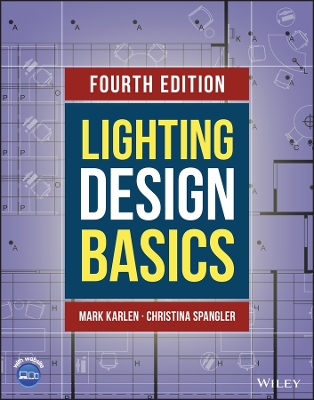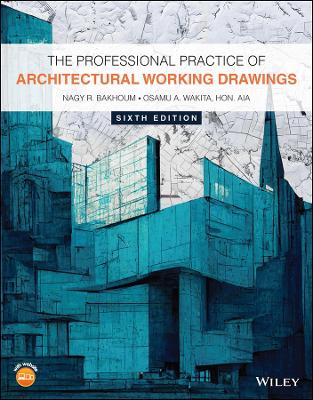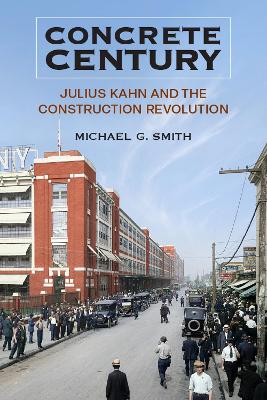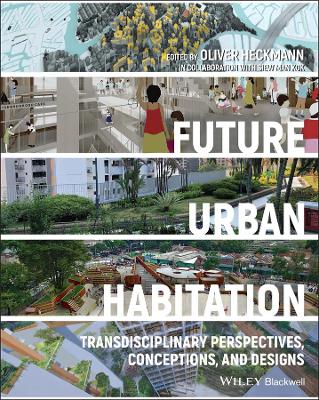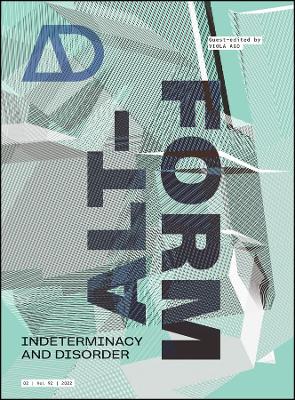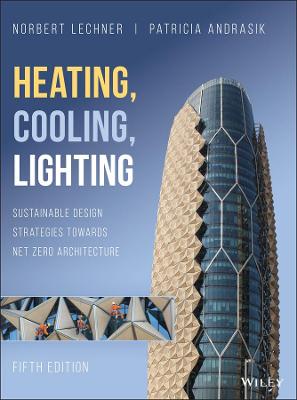People Flow in Buildings
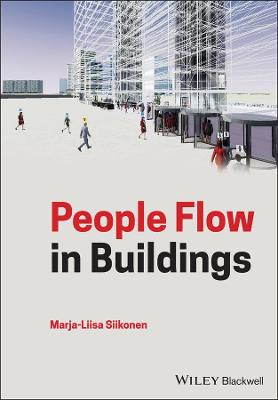 -15%
portes grátis
-15%
portes grátis
People Flow in Buildings
Siikonen, Marja-Liisa
John Wiley and Sons Ltd
10/2021
448
Dura
Inglês
9781119545569
15 a 20 dias
982
Preface
Scope of the book
PART I
1. Building design population
1.1 Office building population
1.2 Number of inhabitants in residential buildings
1.3 Number of hotel guests
1.4 People arriving from parking areas
1.5 Population in hospitals
1.6 Other types of populated buildings
2. People counting methods
2.1. Counting technology inside and outside buildings
2.2. Passenger traffic components
2.3. Manual people-counting
2.4. Use of optical vision
2.5. Visitor-counting with photocell signals and infra-red beams
2.6. People-counting with access control system
2.7. Passenger-counting by load-weighing device
2.8. Elevator monitoring systems
2.9. External traffic measurement devices
2.10. Smart sensing and mobile computing
3. Passenger arrival process in buildings
3.1 Introduction
3.2 Poisson arrival process
3.2.1 Probability density function
3.2.2 Example of passenger arrivals through security cages
3.3 Passenger arrivals in batches
3.3.1 Batch arrivals in elevator lobbies
3.3.2 Batch arrivals in escalators
3.3.3 Observed batch size distributions in several building types
3.3.4 Batch size variation in elevator lobbies during the day
3.3.5 Modelling of batch size distribution
4. Daily vertical passenger traffic profiles
4.1 Introduction
4.1 Vertical building traffic components
4.1 Two-way traffic profiles
4.1 Effect of inter-floor traffic
4.1 Occupancy in buildings
4.2 Passenger trips with elevators
4.3 People flow in office buildings
4.3.1 Traffic in offices
4.3.2 Observed daily two-way traffic profiles
4.3.3 Daily traffic profiles with interfloor traffic
4.4 People flow in hotels
4.4.1 Traffic in hotels
4.4.2 Daily traffic profiles in hotels
4.5 People flow in residential buildings
4.5.1 Traffic in residential buildings
4.5.2 Traffic profiles in residential buildings
4.6 People flow profiles in hospitals
4.6.1 Hospital traffic
4.6.2 Daily traffic in hospitals
4.7 People flow in commercial and public buildings
4.7.1 Traffic in commercial and public buildings
4.7.2 Daily people flow in escalators
4.7.3 Daily people flow in elevators in shopping centers
4.7.4 Duration of a visit in a shopping centre
4.7.5 People flow by GPS in public buildings
4.8 People flow on cruise ships
4.8.1 Traffic in cruisers
4.8.2 Daily traffic profiles for typical days
5. Monitored elevator traffic data
5.1 Introduction
5.2 Service quality parameters
5.3 Measured passenger service level
5.3.1 Measured passenger traffic with external device
5.3.2 Call time distribution
5.3.3 Waiting time distribution with destination control
5.3.4 Monthly service times
5.4 Measured elevator performance
5.4.1 Number of starts during a month
5.4.2 Correlation between cycle time and round trip time
Part II: People flow solutions
6. Historical overview
7. Push button control systems
7.1 Signal operation
7.2 Single-button collective control
7.3 Down collective control
7.4 Interconnected full collective control principle
8. Collective group control system
8.1 Software-based collective control system
8.2 Bunching
8.3 Next car up
8.4 Dynamic sub-zoning
8.5 Channeling
8.6 Queue selective control system
9. Intelligent group control systems
9.1 Performance requirements
9.2 Control system architectures
10. Artificial Intelligence in elevator dispatching
10.1 Introduction
10.2 AI architectures
10.3 Traffic forecasting
10.4 Fuzzy logic
10.5 Genetic algorithm
10.6 Neural networks
10.7 Optimization objective functions
10.8 Elevator lobby with collective control system
10.9 Hospital service modes
11. Destination control system
11.1 Adaptive call allocation algorithm
11.2 Destination control system
11.3 Hybrid destination control system
11.4 "Harmonized" elevator dispatching
11.5 Elevator lobby with destination control system
12. Multi-car control systems
12.1 Introduction
12.2 Paternoster
12.3 Odyssey
12.4 Double-deck elevators
12.4.1 Functional principle of double-deck elevators
12.4.2 Double-deck collective control
12.4.3 Double-deck destination control
12.4.4 Harmonized dispatching for double-deck elevators
12.5 TWIN
12.6 MULTI
12.7 Other possible multi-car elevator control systems
13. Access control systems
2.11. Application areas
2.12. Access control by an external provider
2.13. Access control embedded in an elevator control
14. Architectural considerations of elevators
14.1 Layouts with conventional control
14.2 Layouts with destination control system
14.3 Dimensions of passenger elevators
14.1 Vertical elevator dimensions
14.2 Lobby arrangement with double-deck elevators
15. Architectural considerations of other people flow solutions
15.1 Escalator arrangements
15.2 Horizontal escalator dimensions
15.3 Vertical escalator dimensions
15.4 Dimensions of moving walkways
15.5 Staircase dimensions
15.6 Building door types
Part III: People flow calculation methods
16. Introduction
17. Elevator traffic calculation methods
17.1 Elevator performance parameters
17.2 Elevator handling capacity equation
17.3 Elevator kinematics
17.3.1 Elevator rated speed
17.3.2 Flight time calculation
17.4 Up-peak roundtrip time equations
17.4.1 Uniform passenger arrivals
17.4.2 Poisson arrival process
17.4.3 Uniform arrival process for r-floor elevator jumps
17.4.4 Poisson arrival process for r-floor elevator jumps
17.4.5 Uniform arrival process for elevator jumps between floor pairs
17.4.6 Poisson arrival process for elevator jumps between floor pairs
17.4.7 A generalized roundtrip time formula
17.5 Round trip time related equations
17.5.1 Shuttle elevators
17.5.2 Express zones
17.5.3 Dynamic zoning in up-peak
17.5.4 Unsymmetric elevator groups
17.5.5 Multiple entrance floors
17.5.6 Two-way traffic
17.6 Multicar traffic analysis
17.6.1 Paternoster performance
17.6.2 Double-deck performance
17.6.3 Number of MULTI cabins and shafts
18. Passenger service level
18.1 Queuing theoretical approach
18.1.1 Waiting times
18.1.2 Transit times
18.1.3 Journey time
18.2 Queuing at hot spots
18.3 Egress time with elevators
19. Pedestrian traffic
19.1 People flow density
19.1.1 Level of Service
19.1.2 Human body size
19.1.3 Passenger characteristics
19.1.4 Passenger space demand in elevators
19.2 Escalator handling capacity
19.3 Handling capacity of moving walkways
19.4 People flow in walkways
19.5 People flow in staircases
19.6 People flow in corridors and doorways
19.7 Handling capacities of turnstiles and ticket counters
19.8 Number of destination operation panels
Part IV: People flow simulation methods
20. Introduction
21. Traffic simulation methods
21.1 Monte Carlo simulation
21.2 Passenger traffic generation
21.3 Traffic simulation of an elevator group
21.4 Building traffic simulation
21.5 People flow simulation
21.5.1 Simulation software architecture
21.5.2 Passenger routing model
22. Simulation procedure
22.1 Simulated handling capacity
22.2 Initial transient
22.3 Stepwise or ramp arrival profiles
22.4 Traffic patterns
22.4.1 Introduction
22.4.2 Office traffic templates
22.4.3 Hotel traffic templates
22.4.4 Traffic templates of residential buildings
23. Validation of elevator traffic simulation software
23.1 Introduction
23.2 Verification of simulator models
23.3 Validation of the elevator traffic simulator
24. Simulated elevator performance and passenger service level
24.1 Introduction
24.1 Up-peak boosting
24.1.1 Traffic boosting with destination control
24.1.2 Boosting with double-deck system
24.1.3 Effect of elevator group size
24.2 Traffic simulations with diverse control systems
24.2.1 Simulation setup for an example building
24.2.2 Conventional control with single-car elevator system
24.2.3 Destination control with single-car elevator system
24.2.4 Conventional control double-deck system
24.2.5 Destination control double-deck system
24.3 Comparison handling capacities
24.4 Service time distributions with conventional system
Part V: People flow planning and evacuation
25. Introduction
26. ISO 8100-32
26.1 Background
26.2 Design process
26.3 ISO calculation method
26.1 ISO simulation method
26.2 Selection of rated load based on mass
26.3 Selection of rated load based on area and mass
27. Design criteria
27.1 ISO 8100-32 design criteria
27.2 BCO design criteria for offices
27.3 Other design criteria
28. Elevatoring low and mid-rise buildings
28.1 Offices
28.2 Hotels
28.3 Residential buildings
28.4 Hospitals
28.5 Parking areas
29. People transportation in commercial and public buildings
29.1 Mass transits
29.2 Public transportation buildings
29.3 Commercial buildings
29.4 Observation decks
30. Elevatoring tall buildigs
30.1 Background
30.2 Zoning of supertall buildings
30.3 Example zonings of a supertall building
30.4 Arrangements with zoning from the ground
30.4.1 Elevator arrangement selection with ISO simulation method
30.4.2 Elevator group lobby layouts
30.4.3 Main entrance core areas
30.5 Sky lobby arrangement
30.5.1 Double-deck shuttle elevators
30.5.2 Multi-car shuttle elevators
30.5.3 Elevator selection with ISO simulation method
30.5.4 Elevator group loofbby layouts
30.5.5 Main entrance core areas for sky lobby arrangements
31. Core space of different arrangements
32. Building evacuation
32.1 Introduction
32.2 Egress time calculation in building design
32.2.1 Background
32.2.2 Egress by stairs
32.2.3 Egress by elevators
32.3 Generic emergency evacuation types
32.3.1 Non-fire emergency evacuation
32.3.2 Fire evacuation modes
32.3.3 Scenatio configuration from BMS
32.4 Elevator evacuation-related standards and guidelines
32.4.1 Evacuation elevator requirements
32.4.2 Firefighters lifts - EN 81-72:2015
32.4.3 Evacuation of disabled persons using lifts - CEN/TS 81-76:2011
32.4.4 Occupant Evacuation Operation - ASME A17.1:2013
32.4.5 Elevators used to assist in building evacuation - ISO/TS 18870:2014
32.5 Evacuation strategies of megatall buildings
32.5.1 Introduction
32.5.2 Jeddah Tower
32.5.3 Shanghai Tower
32.5.4 Royal Clock Tower, Makkah
32.5.5 One World Trade Center, New York
33. How high can we go?
Epilogue
Bibliography
Glossary
Preface
Scope of the book
PART I
1. Building design population
1.1 Office building population
1.2 Number of inhabitants in residential buildings
1.3 Number of hotel guests
1.4 People arriving from parking areas
1.5 Population in hospitals
1.6 Other types of populated buildings
2. People counting methods
2.1. Counting technology inside and outside buildings
2.2. Passenger traffic components
2.3. Manual people-counting
2.4. Use of optical vision
2.5. Visitor-counting with photocell signals and infra-red beams
2.6. People-counting with access control system
2.7. Passenger-counting by load-weighing device
2.8. Elevator monitoring systems
2.9. External traffic measurement devices
2.10. Smart sensing and mobile computing
3. Passenger arrival process in buildings
3.1 Introduction
3.2 Poisson arrival process
3.2.1 Probability density function
3.2.2 Example of passenger arrivals through security cages
3.3 Passenger arrivals in batches
3.3.1 Batch arrivals in elevator lobbies
3.3.2 Batch arrivals in escalators
3.3.3 Observed batch size distributions in several building types
3.3.4 Batch size variation in elevator lobbies during the day
3.3.5 Modelling of batch size distribution
4. Daily vertical passenger traffic profiles
4.1 Introduction
4.1 Vertical building traffic components
4.1 Two-way traffic profiles
4.1 Effect of inter-floor traffic
4.1 Occupancy in buildings
4.2 Passenger trips with elevators
4.3 People flow in office buildings
4.3.1 Traffic in offices
4.3.2 Observed daily two-way traffic profiles
4.3.3 Daily traffic profiles with interfloor traffic
4.4 People flow in hotels
4.4.1 Traffic in hotels
4.4.2 Daily traffic profiles in hotels
4.5 People flow in residential buildings
4.5.1 Traffic in residential buildings
4.5.2 Traffic profiles in residential buildings
4.6 People flow profiles in hospitals
4.6.1 Hospital traffic
4.6.2 Daily traffic in hospitals
4.7 People flow in commercial and public buildings
4.7.1 Traffic in commercial and public buildings
4.7.2 Daily people flow in escalators
4.7.3 Daily people flow in elevators in shopping centers
4.7.4 Duration of a visit in a shopping centre
4.7.5 People flow by GPS in public buildings
4.8 People flow on cruise ships
4.8.1 Traffic in cruisers
4.8.2 Daily traffic profiles for typical days
5. Monitored elevator traffic data
5.1 Introduction
5.2 Service quality parameters
5.3 Measured passenger service level
5.3.1 Measured passenger traffic with external device
5.3.2 Call time distribution
5.3.3 Waiting time distribution with destination control
5.3.4 Monthly service times
5.4 Measured elevator performance
5.4.1 Number of starts during a month
5.4.2 Correlation between cycle time and round trip time
Part II: People flow solutions
6. Historical overview
7. Push button control systems
7.1 Signal operation
7.2 Single-button collective control
7.3 Down collective control
7.4 Interconnected full collective control principle
8. Collective group control system
8.1 Software-based collective control system
8.2 Bunching
8.3 Next car up
8.4 Dynamic sub-zoning
8.5 Channeling
8.6 Queue selective control system
9. Intelligent group control systems
9.1 Performance requirements
9.2 Control system architectures
10. Artificial Intelligence in elevator dispatching
10.1 Introduction
10.2 AI architectures
10.3 Traffic forecasting
10.4 Fuzzy logic
10.5 Genetic algorithm
10.6 Neural networks
10.7 Optimization objective functions
10.8 Elevator lobby with collective control system
10.9 Hospital service modes
11. Destination control system
11.1 Adaptive call allocation algorithm
11.2 Destination control system
11.3 Hybrid destination control system
11.4 "Harmonized" elevator dispatching
11.5 Elevator lobby with destination control system
12. Multi-car control systems
12.1 Introduction
12.2 Paternoster
12.3 Odyssey
12.4 Double-deck elevators
12.4.1 Functional principle of double-deck elevators
12.4.2 Double-deck collective control
12.4.3 Double-deck destination control
12.4.4 Harmonized dispatching for double-deck elevators
12.5 TWIN
12.6 MULTI
12.7 Other possible multi-car elevator control systems
13. Access control systems
2.11. Application areas
2.12. Access control by an external provider
2.13. Access control embedded in an elevator control
14. Architectural considerations of elevators
14.1 Layouts with conventional control
14.2 Layouts with destination control system
14.3 Dimensions of passenger elevators
14.1 Vertical elevator dimensions
14.2 Lobby arrangement with double-deck elevators
15. Architectural considerations of other people flow solutions
15.1 Escalator arrangements
15.2 Horizontal escalator dimensions
15.3 Vertical escalator dimensions
15.4 Dimensions of moving walkways
15.5 Staircase dimensions
15.6 Building door types
Part III: People flow calculation methods
16. Introduction
17. Elevator traffic calculation methods
17.1 Elevator performance parameters
17.2 Elevator handling capacity equation
17.3 Elevator kinematics
17.3.1 Elevator rated speed
17.3.2 Flight time calculation
17.4 Up-peak roundtrip time equations
17.4.1 Uniform passenger arrivals
17.4.2 Poisson arrival process
17.4.3 Uniform arrival process for r-floor elevator jumps
17.4.4 Poisson arrival process for r-floor elevator jumps
17.4.5 Uniform arrival process for elevator jumps between floor pairs
17.4.6 Poisson arrival process for elevator jumps between floor pairs
17.4.7 A generalized roundtrip time formula
17.5 Round trip time related equations
17.5.1 Shuttle elevators
17.5.2 Express zones
17.5.3 Dynamic zoning in up-peak
17.5.4 Unsymmetric elevator groups
17.5.5 Multiple entrance floors
17.5.6 Two-way traffic
17.6 Multicar traffic analysis
17.6.1 Paternoster performance
17.6.2 Double-deck performance
17.6.3 Number of MULTI cabins and shafts
18. Passenger service level
18.1 Queuing theoretical approach
18.1.1 Waiting times
18.1.2 Transit times
18.1.3 Journey time
18.2 Queuing at hot spots
18.3 Egress time with elevators
19. Pedestrian traffic
19.1 People flow density
19.1.1 Level of Service
19.1.2 Human body size
19.1.3 Passenger characteristics
19.1.4 Passenger space demand in elevators
19.2 Escalator handling capacity
19.3 Handling capacity of moving walkways
19.4 People flow in walkways
19.5 People flow in staircases
19.6 People flow in corridors and doorways
19.7 Handling capacities of turnstiles and ticket counters
19.8 Number of destination operation panels
Part IV: People flow simulation methods
20. Introduction
21. Traffic simulation methods
21.1 Monte Carlo simulation
21.2 Passenger traffic generation
21.3 Traffic simulation of an elevator group
21.4 Building traffic simulation
21.5 People flow simulation
21.5.1 Simulation software architecture
21.5.2 Passenger routing model
22. Simulation procedure
22.1 Simulated handling capacity
22.2 Initial transient
22.3 Stepwise or ramp arrival profiles
22.4 Traffic patterns
22.4.1 Introduction
22.4.2 Office traffic templates
22.4.3 Hotel traffic templates
22.4.4 Traffic templates of residential buildings
23. Validation of elevator traffic simulation software
23.1 Introduction
23.2 Verification of simulator models
23.3 Validation of the elevator traffic simulator
24. Simulated elevator performance and passenger service level
24.1 Introduction
24.1 Up-peak boosting
24.1.1 Traffic boosting with destination control
24.1.2 Boosting with double-deck system
24.1.3 Effect of elevator group size
24.2 Traffic simulations with diverse control systems
24.2.1 Simulation setup for an example building
24.2.2 Conventional control with single-car elevator system
24.2.3 Destination control with single-car elevator system
24.2.4 Conventional control double-deck system
24.2.5 Destination control double-deck system
24.3 Comparison handling capacities
24.4 Service time distributions with conventional system
Part V: People flow planning and evacuation
25. Introduction
26. ISO 8100-32
26.1 Background
26.2 Design process
26.3 ISO calculation method
26.1 ISO simulation method
26.2 Selection of rated load based on mass
26.3 Selection of rated load based on area and mass
27. Design criteria
27.1 ISO 8100-32 design criteria
27.2 BCO design criteria for offices
27.3 Other design criteria
28. Elevatoring low and mid-rise buildings
28.1 Offices
28.2 Hotels
28.3 Residential buildings
28.4 Hospitals
28.5 Parking areas
29. People transportation in commercial and public buildings
29.1 Mass transits
29.2 Public transportation buildings
29.3 Commercial buildings
29.4 Observation decks
30. Elevatoring tall buildigs
30.1 Background
30.2 Zoning of supertall buildings
30.3 Example zonings of a supertall building
30.4 Arrangements with zoning from the ground
30.4.1 Elevator arrangement selection with ISO simulation method
30.4.2 Elevator group lobby layouts
30.4.3 Main entrance core areas
30.5 Sky lobby arrangement
30.5.1 Double-deck shuttle elevators
30.5.2 Multi-car shuttle elevators
30.5.3 Elevator selection with ISO simulation method
30.5.4 Elevator group loofbby layouts
30.5.5 Main entrance core areas for sky lobby arrangements
31. Core space of different arrangements
32. Building evacuation
32.1 Introduction
32.2 Egress time calculation in building design
32.2.1 Background
32.2.2 Egress by stairs
32.2.3 Egress by elevators
32.3 Generic emergency evacuation types
32.3.1 Non-fire emergency evacuation
32.3.2 Fire evacuation modes
32.3.3 Scenatio configuration from BMS
32.4 Elevator evacuation-related standards and guidelines
32.4.1 Evacuation elevator requirements
32.4.2 Firefighters lifts - EN 81-72:2015
32.4.3 Evacuation of disabled persons using lifts - CEN/TS 81-76:2011
32.4.4 Occupant Evacuation Operation - ASME A17.1:2013
32.4.5 Elevators used to assist in building evacuation - ISO/TS 18870:2014
32.5 Evacuation strategies of megatall buildings
32.5.1 Introduction
32.5.2 Jeddah Tower
32.5.3 Shanghai Tower
32.5.4 Royal Clock Tower, Makkah
32.5.5 One World Trade Center, New York
33. How high can we go?
Epilogue
Bibliography
Glossary


